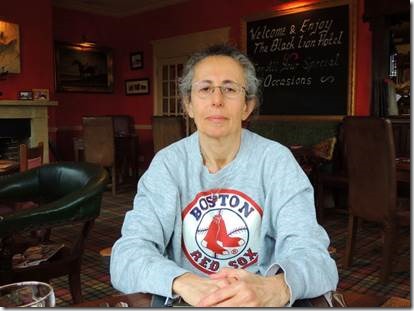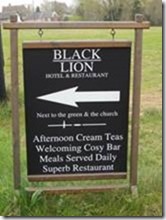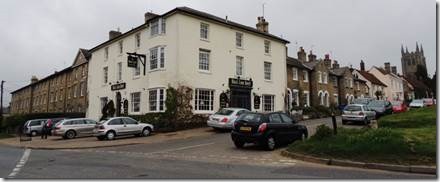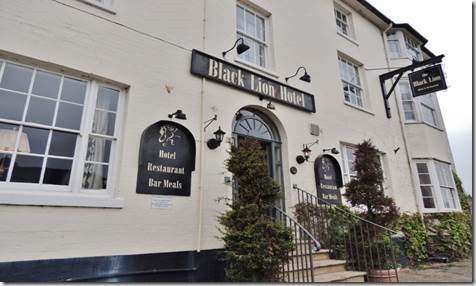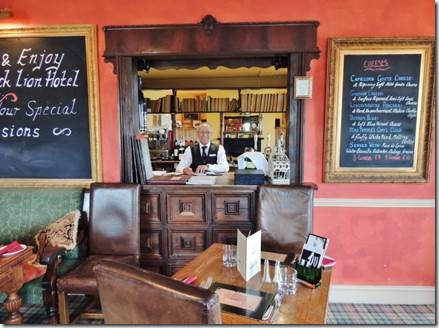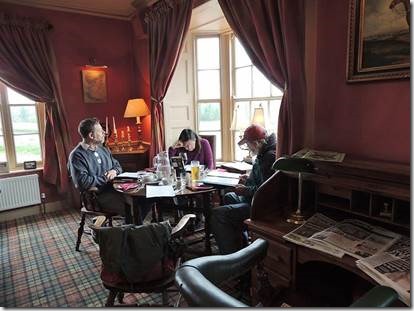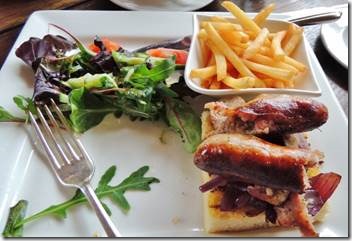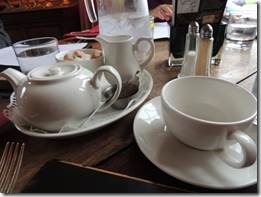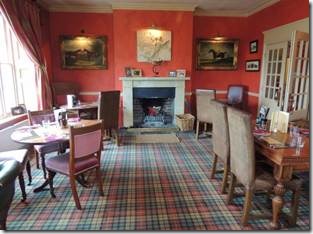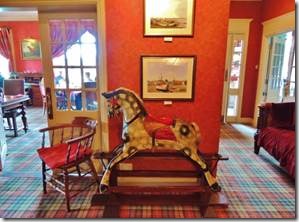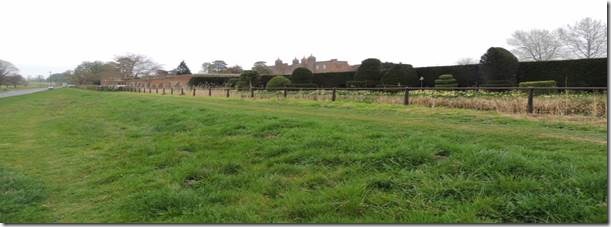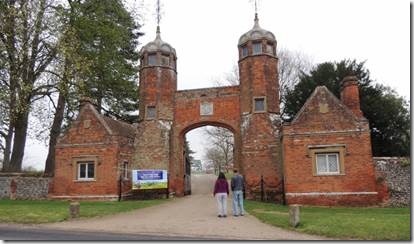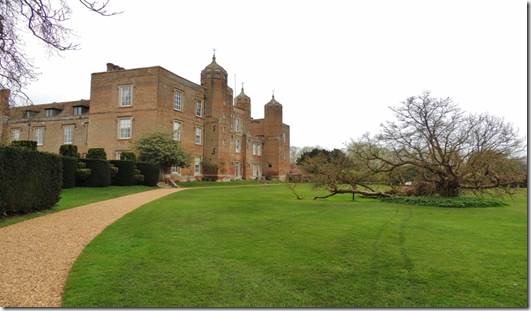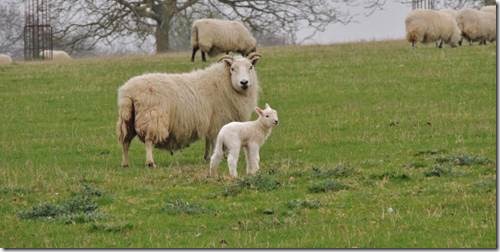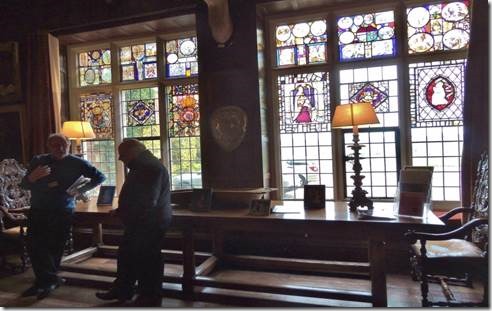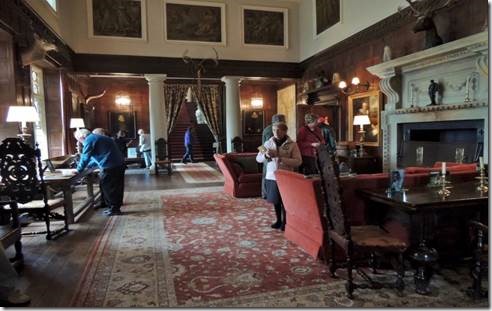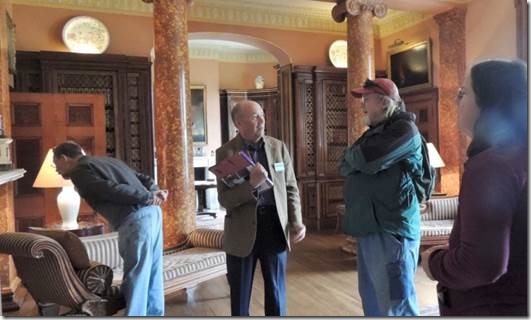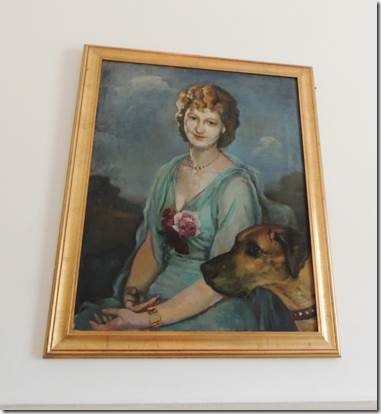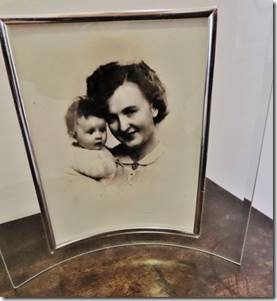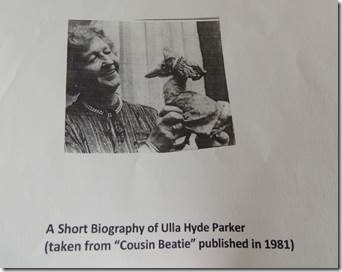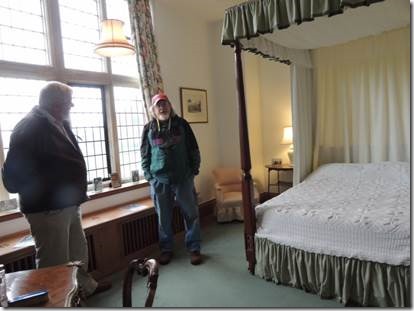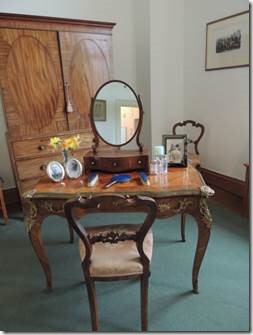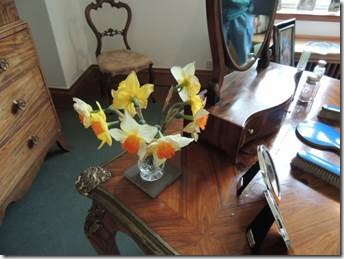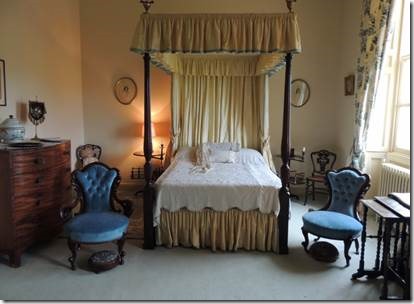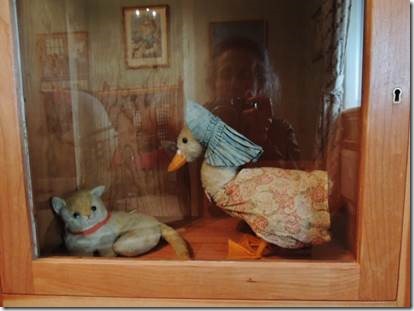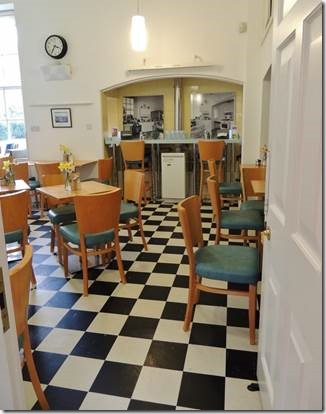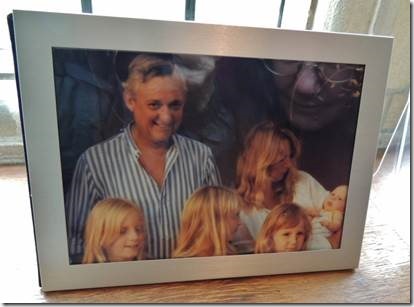Cheers,
Just in time for baseball season I have a new Boston Red Sox sweatshirt!
Ru
|
My “new to me” Red Sox Sweatshirt! During our passage from London to Ipswich I’d worn my much loved but very noticably worn Red Sox “hoodie.” Well, the middle of last week a package came for me! An absolute total surprise!! Our Welsh passage guest, Wyn Jones had sent it to me. This is what he wrote: “Ruth – I just found this cast off from my daughter and thought you could make use of it.” As my old, rather tatty Red Sox hoodie is no longer allowed to venture far from the boat, this new B shirt is a treat. Funny enough my aged hoodie was also a gift; my friend Marth shared the exhorbitant cost of it for a birthday gift many years ago. I did tell Wyn that if his daughter sever pent any time in Boston/Cambridge for graduate school I would regift it back to her as I’d probably still have it after her 4 years of college when she would be thinking graduate schools. I just had to wear it on our outing to Long Melford…. |
|
Lunch at the Black Lion Conveniently located not far from the Great Church of the Holy Trinity, is the Black Lion Hotel and Restaurant. Recommended in my 2009 Lonely Planet England, it’s still as good. |
|
The very friendly restaurant maitre’d was originally from Morocco. |
|
Pondering the menu…..too many choices. |
|
My choice…though I usually don’t choose meat these were wonderful… Long Melford Sausages and Red Onion Marmalade! Searged on grilled buttered bread. Yum!!!! And a lovely pot of tea. “The Black Lion’s award-winning restaurant is open for lunch and dinner, offering a substantial menu featuring many hearty favourites including Estate potted hare and partridge pate, wholemeal toast or Angus oxtail & kidney suet pudding, truffle oil mashed potatoes, roast chantey carrots, red wine sauce and Slow roasted shoulder of pork stuffed with bramley apple and sage, fondant potatoes, Aspall Suffolk cider sauce.” http://www.blacklionhotel.net/ |
|
The food was good, the prices reasonable and it was quiet enough so you could notice the absense of noise which too many restaurants seem to be full of these days. We were a bit early, but when we left, the place was filling up. |
|
After lunch it was time to explore Long Melford Hall. Melford Hall started out as a monastic hunting estate Queen Elizabeth I visited in 1578 Melford Hall was sacked during the civil war The Hall was requisitioned during World War Two The north wing burnt down in 1942 Melford Hall was given to the National Trust in 1960 In 2010 we celebrated 50 years of working with the family |
|
“Discover the stories behind this eclectic home. It’s fair to say that Melford Hall has had its share of trials and tribulations, but it’s thanks to many generations from medieval monks to the Hyde Parker family who still live here, that this home still stands. Around every corner there’s a new twist in the story – from Beatrix Potter sketches to collections of naval paintings and Chinese porcelain – everything tells a story and everyone has left their mark. Devastated by fire in 1942, it was nurtured back to life by the Hyde Parker family and it remains their much loved family home to this day. It is their stories of family life at Melford – from visits by their cousin Beatrix Potter through to our visitors today that make this house more than bricks and mortar.” http://www.nationaltrust.org.uk/melford-hall/ http://www.viewpictures.co.uk/Building.aspx?ID=24076 gives detailed descriptions of some of the rooms within the house. |
|
Lambing time at Long Melford Hall We walked a bit through the fields before entering the house itself. |
|
The Great Hall where you can view the family scrapbook while warming by the fire and learn from the guides stationed in the room. |
|
The volunteer guides were just wonderful! It was obvious they loved Long Melford Hall and the family who lives there now. “You’ll play a key role in engaging visitors with the stories of our places and really contributing to their visit. With roles ranging from room guides, costumed interpreters and conservation assistants to storytellers, there are a variety of different opportunities available to match your skills and interests. Our room guides are there to be a friendly face to bring our places to life, welcoming visitors and answering their questions “ |
|
My favorites were the stories of Lady Ulla Hyde-Parker, the Nanny, and Beatrix Potter. 1951: Lady Ulla Portrait painting of Ulla, Lady Hyde Parker “On her husband’s death, Lady Ulla Hyde Parker was determined to keep the estate together.” http://www.nationaltrust.org.uk/wra-1356322178085/731440/ “ For almost five centuries, the picturesque turrets of Melford Hall have dominated Long Melfords village green. The tranquillity of its setting however hides a turbulent story that has seen the home ransacked during the Civil War in 1642 and one wing completely gutted by fire in 1942. (We were told by the guides, the fire was most likely caused by careless British service men billeted in the home which had been requisitioned by the military during WW 2.) Contrary to advice to pull down the devastated north wing, William Hyde Parker and his Danish wife, Ulla, were determined to rebuild Melford Hall from the ashes. The architect Albert Richardson was taken on by the family and he devised a method of building an internal frame within the burnt out red brick shell to take the weight of the new floors and roof. A new layout was planned for the wing, and Lady Ullas Scandinavian tastes heavily influenced the dcor. The former dark interior and heavy oak furnishings were replaced with bright white walls and floors creating the lovely atmosphere that is still found in this wing. Sadly William did not live long to see the restored wing as he died in 1951. The family were confronted with a huge payment in inheritance tax and as a result the hall, some of its principle contents, and 130 acres of the park was transferred to the Treasury to settle this payment. In turn it was then offered to the National Trust, but was initially turned down as it was deemed un-economical. Lady Ullas determination to save the hall once again came to the forefront and she arranged for the hall to open to the public. Various rooms were set up as show rooms, floors were scrubbed down, a guidebook was written and the family’s nanny sat by the front door to collect the admission fees from the visitors. She was kept busy. Lady Ulla proved that it was economically viable to open to the public, and the National Trust agreed to take Melford Hall into its care in 1960. Moreover, due to the experience the family had gained of opening the hall, the National Trust arranged for Lady Ulla to remain as their administrator and resident as a tenant in the North Wing…….” |
|
The round framed photos are Lady Ulla’s mother and father. Randal and this room’s volunteer had a long discussion about WW 2. |
|
Beatrix Potter’s Room “Beatrix Potter was the cousin of Ethel, Lady Hyde Parker, grandmother of Sir Richard Hyde Parker, the present Baronet. She visited Melford Hall on many occasions and painted a series of watercolours of the house. The visitors’ book contains numerous signatures and sketches, which mark her visits to the house. The collections at Melford Hall include several of her soft toys, which served as models for her illustrations. Beatrix Potter slept in the West Bedroom at Melford Hall. The room is furnished, as it would have been when she frequently visited, with a Victorian bed and furniture. To the amusement of the Hyde Parker children she would bring her small animals on her visits to the Hall and house them in the adjoining turret room (which can be seen through the open door). William Hyde Parker once remarked: ‘When we were children we just loved it when she (Beatrix) arrived, for she always brought a cage with mice, another with a hamster or a porcupine and a third with something else in it. It was such fun for all us children’. The Tale of Jemima Puddle-Duck was based on real life events in the farmyard at Beatrix Potter’s home at Hill Top in the Lake District. The duck pond in the same tale is based upon an illustration Beatrix Potter drew for the Jeremy Fisher stories when visiting her relatives at Melford Hall.” http://www.nationaltrust.org.uk/melford-hall/history/view-page/item711156/ |
|
“The Beatrix Potter Room at Melford Hall displays watercolours and drawings by Beatrix Potter. A model of Jemima Puddle-Duck is also on display, given as a present from Beatrix Potter to the Hyde Parker children.” http://www.nationaltrust.org.uk/ |
|
The tea room reminds me of a 1950’s diner |
|
Sir Richard and Lady Jeanie “Meanwhile, in amongst all of these projects and the many visitors coming through the doors, Melford Hall remained a home for Sir Richard and Lady Jeanie and their young family. For a long time family lunches were still held in the show dining room, although it was sometimes a rush to clear everything away before opening time.” |
About Long Melford Hall….
“The history and architecture of our country houses are part of our heritage. This year marks 50 years of a partnership between the National Trust and the Hyde Parker family, which has seen Melford Hall in Long Melford saved for future generations.
As a nation we love them, millions of us visit them. The history and architecture of our country houses are part of our heritage. This year marks 50 years of a partnership between the National Trust and the Hyde Parker family, which has seen Melford Hall in Long Melford saved for future generations. National Trust property manager Luke Potter tells the story.
For almost five centuries, the picturesque turrets of Melford Hall have dominated Long Melfords village green. The tranquillity of its setting however hides a turbulent story that has seen the home ransacked during the Civil War in 1642 and one wing completely gutted by fire in 1942.
Contrary to advice to pull down the devastated north wing, William Hyde Parker and his Danish wife, Ulla, were determined to rebuild Melford Hall from the ashes. The architect Albert Richardson was taken on by the family and he devised a method of building an internal frame within the burnt out red brick shell to take the weight of the new floors and roof.
A new layout was planned for the wing, and Lady Ullas Scandinavian tastes heavily influenced the dcor. The former dark interior and heavy oak furnishings were replaced with bright white walls and floors creating the lovely atmosphere that is still found in this wing.
Sadly William did not live long to see the restored wing as he died in 1951. The family were confronted with a huge payment in inheritance tax and as a result the hall, some of its principle contents, and 130 acres of the park was transferred to the Treasury to settle this payment. In turn it was then offered to the National Trust, but was initially turned down as it was deemed un-economical.
Lady Ullas determination to save the hall once again came to the forefront and she arranged for the hall to open to the public. Various rooms were set up as show rooms, floors were scrubbed down, a guidebook was written and the familys nanny sat by the front door to collect the admission fees from the visitors. She was kept busy.
Lady Ulla proved that it was economically viable to open to the public, and the National Trust agreed to take Melford Hall into its care in 1960. Moreover, due to the experience the family had gained of opening the hall, the National Trust arranged for Lady Ulla to remain as their administrator and resident as a tenant in the North Wing.
In the 1970s, Lady Ullas son, Sir Richard Hyde Parker, came back to Melford Hall. Along with his wife Jeanie, he threw himself into the management of the hall attending to the many issues that needed his attention and time. With the growing numbers of visitors wanting to see more of the hall, they restored the South Wing, which had been virtually untouched since end of the Second World War. This enabled the bedrooms they had been using in the West Wing to open to the public and the creation of a museum room explaining the connection of Beatrix Potter to Melford Hall. Sir Richard also discovered an early 17th century map of the estate, and the long lost oak avenues were replanted to recreate the 17th century landscape. In 2006, the North Wing was also opened for the first time providing visitors with new toilets and a tea room.
Meanwhile, in amongst all of these projects and the many visitors coming through the doors, Melford Hall remained a home for Sir Richard and Lady Jeanie and their young family.
For a long time family lunches were still held in the show dining room, although it was sometimes a rush to clear everything away before opening time. Laughter and games continued to fill the hall and grounds, and Christmas was celebrated around a huge tree in the Great Hall. The children would even occasionally sneak out tea trays and slide all the way down the grand staircase.
With the devastating fire in 1942, and the struggles of the 1950s, it is remarkable that Melford Hall has survived as a building. Over 40 country houses were lost in Suffolk during the 20th century. These included Acton House, Rushbrooke, Assington Hall and Liston Hall. Some owners simply didnt care about their preservation, with houses becoming surplus to requirements if more than one estate was owned. There were those who gambled their money away and sold their houses off bit by bit for scrap. Then there were the ones that were demolished by fire or became irreversibly damaged during the war, either through enemy action or the result of being requisitioned.
Through the dedication shown over the last 50 years by the Hyde Parkers and the National Trust, Melford Hall has survived where many others have been lost. Just as important though, is the fact that Melford has not just become another stuffed country house.
With the continued passion and involvement of the Hyde Parkers, Melfords spirit as a much loved family home continues to this day and fills it with its own distinctive atmosphere. As Lady Ulla once said, a place like Melford Hall is far more than just bricks and mortar.”

